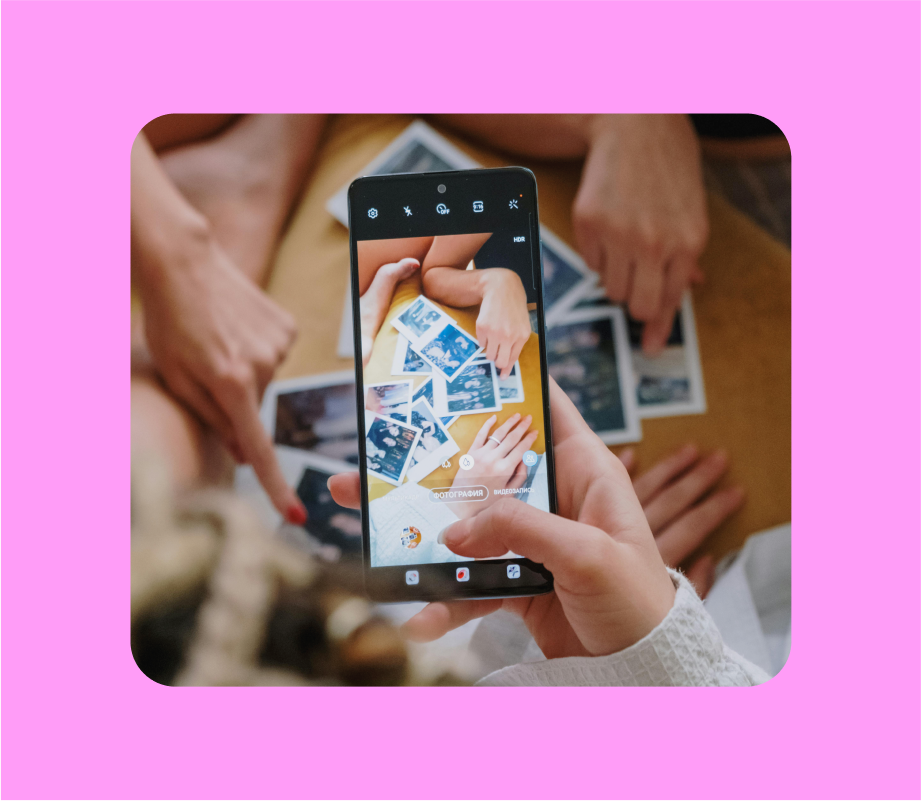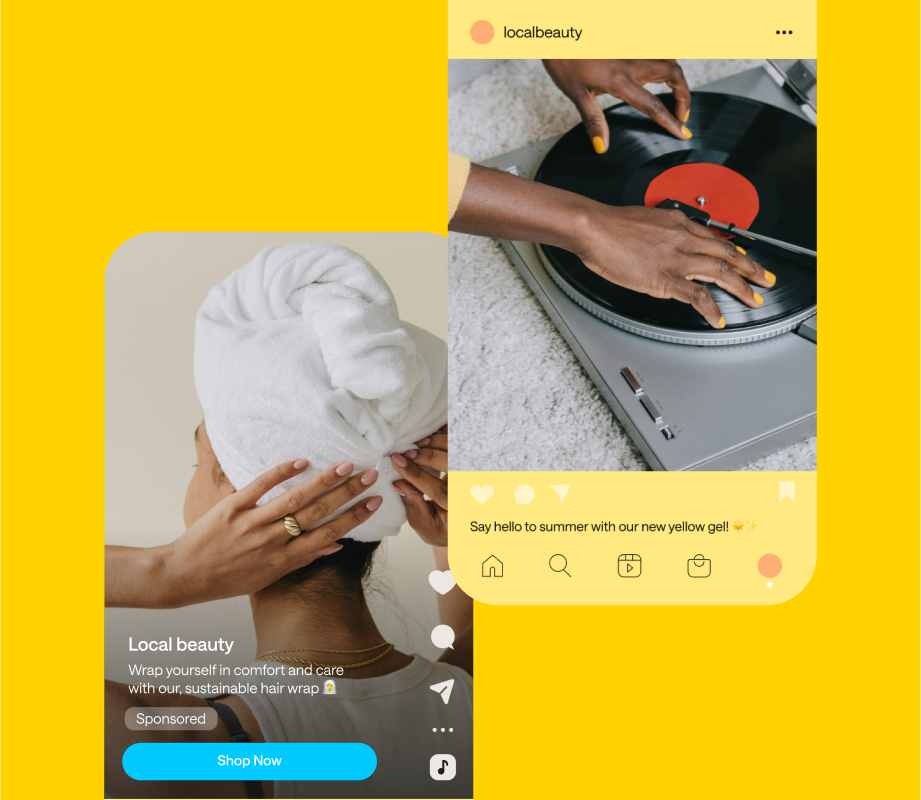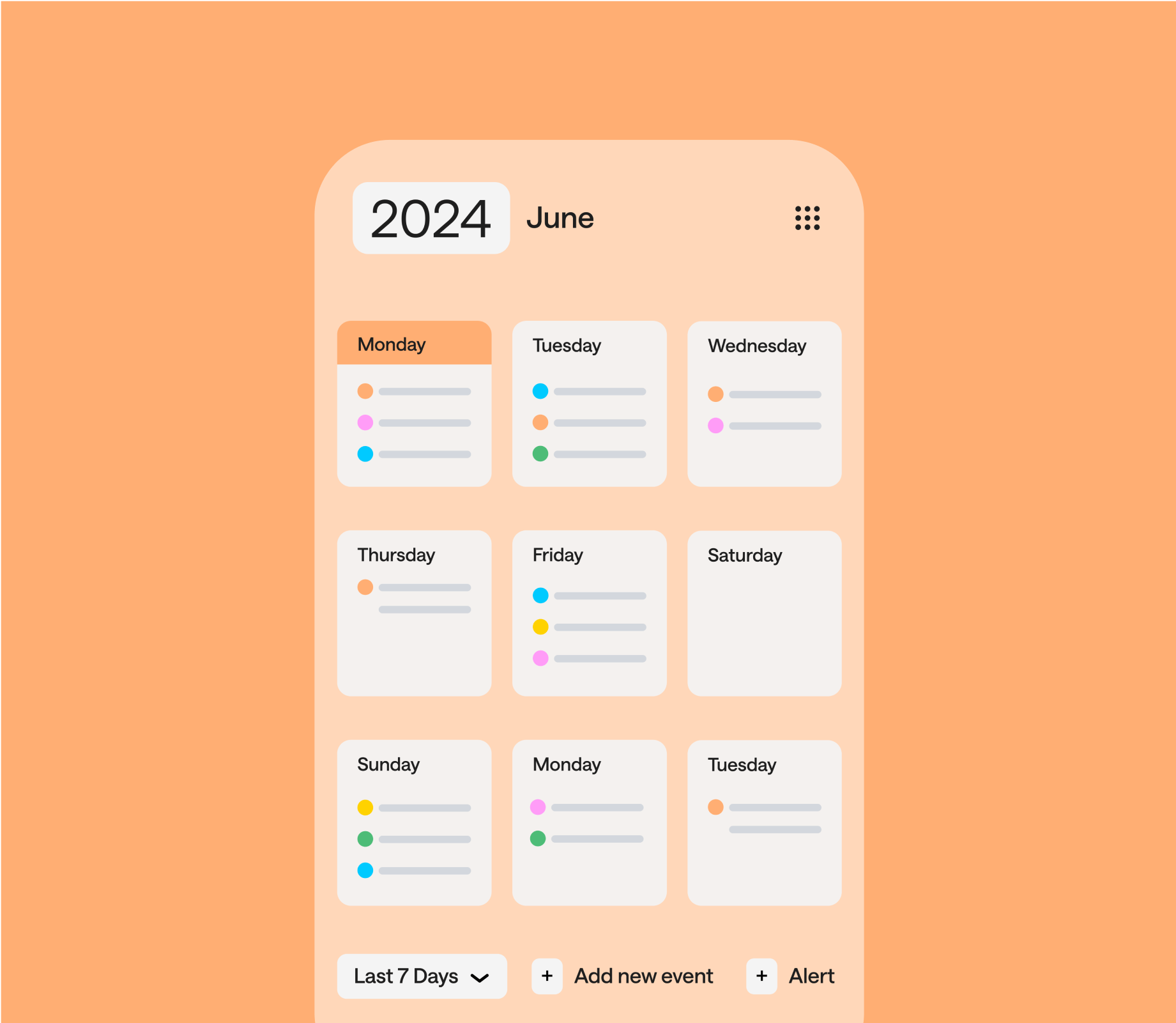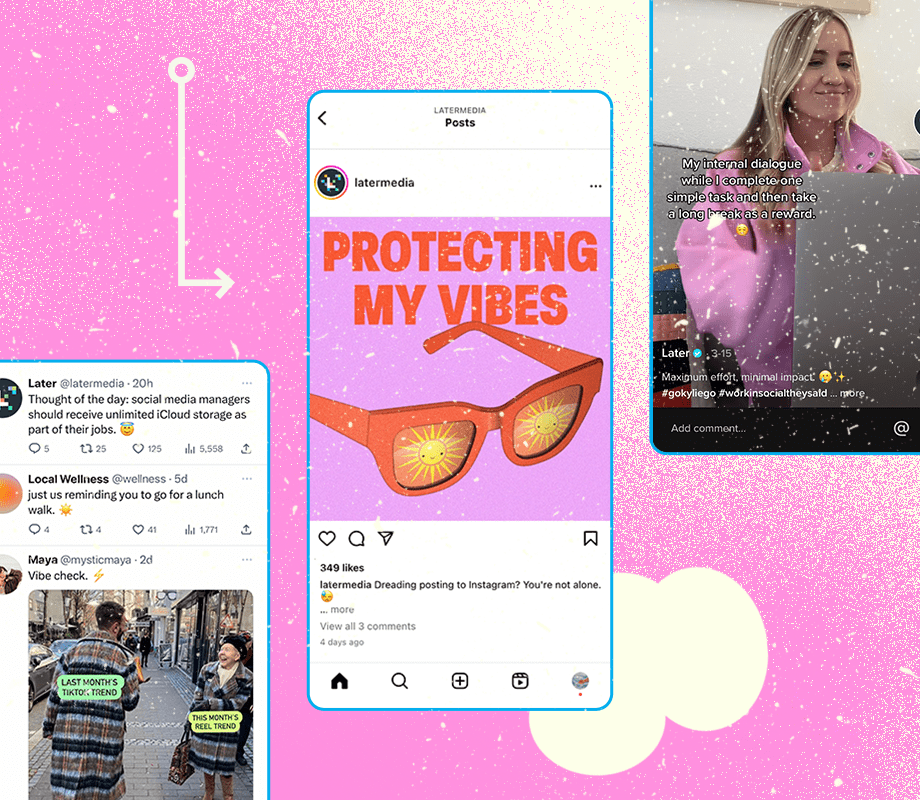With social media, you can feel like you’re just about getting the hang of something, and then everything changes.
Okay, we might be a little dramatic, but it can really feel like that as a social media manager!
If it’s not a new platform to think about, it’s a new feature. It pretty much always means learning something new and getting a few things wrong along the way when you’re finding out what works.
However, the rollercoaster ride of working in social media is why we keep going back for more. Figuring out the hard stuff pays off in the long run, meaning you can ace your KPIs and keep investing in the channel.
Is your social media posting strategy evolving like the platforms you use? To hit your goals, you need to know what content resonates with your audience across your platforms.
Let’s dive into everything you need to know about creating social media content to make your job a little bit easier.
Table of Contents
Join over 1 million marketers to get social news, trends, and tips right to your inbox!
Email Address8 Different Types of Social Media Content
Let’s start with the simple stuff before we look more deeply into the strategy. Here’s a review of the different types of content you can use on social media:
1. Images and Photos
Some platforms are image-first, especially Pinterest and Instagram (although video features highly here too!).
Using high-quality images will capture attention quickly and can be used for product showcases, behind-the-scenes glimpses, and user-generated content to keep your feed visually appealing.
If you’re using images created with AI, make sure that you don’t have any rogue additions like people with extra arms or fingers; there’s still a way to go until AI images are hard to detect online.
2. Videos
Video content can be short and sweet or long-form. Both have their place on social media. Examples of short-form content are Instagram Reels, TikTok Videos, and YouTube Shorts.
Have you ever wondered if your videos are more likely to go viral on Reels vs TikTok vs Shorts? We tested out all 3, and the winner is clear: TikTok!
3. Stories
Stories on Instagram, Facebook, and TikTok offer a way to share short-lived, engaging content.
You can use stories for promotions, quick updates, and interactive content like polls and Q&A sessions to connect with your audience in real-time. Need some tips? Here's 21 Instagram Stories Hacks to Boost Your Engagement.
Plus, you can schedule your Instagram Stories ahead of time to help you save time. Start your free trial today.
4. Live Streams
Live streams are another powerful tool for real-time engagement on YouTube, Instagram, TikTok, and Facebook.
You could use a live stream for Q&As, product launches, and behind-the-scenes events to create a sense of immediacy and connection with your audience.
5. Text Posts
Visual posts have started to become the norm, but don’t forget about well-crafted text posts.
This format gives you the chance to share tips, ask questions, or provide updates to engage your audience on platforms like LinkedIn, Facebook, and Twitter/X.
You can also re-share text posts on Instagram as well to break up photo and Reel content.
6. Infographics
When done well, infographics are a great way to present information clearly and attractively.
They break down complex data into digestible, visual content that's easy to share, making them ideal for educational content and statistics.
7. User-Generated Content (UGC)
UGC is when your followers create content related to your brand; sharing this content builds community and trust.
You can share UGC to showcase how your products are used in real life and to get realistic reviews from your biggest fans, which is a good way to establish your social proof.
8. Polls and Surveys
Interactive content like polls and surveys on X (Twitter) and Instagram Stories can boost engagement and will provide valuable insights into your audience’s preferences and opinions.
Top 6 Social Media Platforms
The social media platform landscape changes rapidly, and it can be hard to keep up with so many social platforms available. Ultimately, you should focus on the ones that best fit your brand and audience, but here are the top platforms on the market right now:
1. TikTok
TikTok continues to dominate with its short-form, highly engaging video content. It's perfect for reaching younger audiences and creating viral content; it helps that the user base continues to grow, too!
TikTok’s algorithm is designed to surface content from a wide range of users, giving your brand the potential to reach millions, even with a small following. With Later, you can schedule your TikTok videos ahead of time based on your personalized best time to post, making growing on TikTok easier than ever.
2. Instagram
Instagram remains a powerhouse with its mix of photos, videos, stories, and Reels.
It's versatile and widely used across various demographics, making it a key platform for any social media strategy. Using an Instagram Management Platform, you can visually plan your feed and schedule your Instagram Stories and Reels to auto-post from anywhere and anytime.
3. YouTube
As the leading platform for long-form video content, YouTube is ideal for in-depth tutorials, product reviews, and vlogs.
YouTube’s search engine capabilities also make it a valuable platform for increasing your content’s discoverability, and it’s pretty easy to embed videos into your website for a secondary audience. Plus, incorporating a YouTube Scheduler as part of your social workflow can streamline your process and save you so many headaches.
4. Facebook
Not just a platform for older generations, Facebook still offers extensive reach and robust advertising options, making it valuable for many brands.
Facebook Groups can also be a Google place to create communities and foster deeper engagement with your audience if your community is on the platform. You can automatically publish to Facebook without a hitch using a Facebook management tool. Using a tool is our preference to ensure you're posting when your Facebook users are most online and engaged.
5. LinkedIn
LinkedIn is primarily for B2B marketing and professional networking. However, with a shift away from Twitter as it turned into X, users are now sharing personal updates along with industry insights, company updates, and professional content.
As a brand, it’s a valuable place to show your culture and connect with potential customers and employees. Not sure where to start? We got you. We have a 4-Week Content Strategy for Smarter LinkedIn Posting. Planning your LinkedIn posts in advance allows you to focus on building the right network.
6. X (Twitter)
X (Twitter) is excellent for real-time updates, customer service, and engaging in industry conversations. Its fast-paced environment is ideal for timely content, news updates, and interacting directly with your audience. Learn how to schedule your tweets.
No matter which of the social platforms your audience likes best, using a social media management platform saves you so much time, allowing you to plan, schedule, and analyze your social media performance all in one easy-to-use tool. What are you waiting for? Create an account today.
How to Get Started with Social Media Content Creation in 6 Steps
Now we know what type of posts are available and where to share them, you’ll want to move on to the logistics of creating a social media content strategy. It may seem daunting, but breaking it down into manageable steps can help.
1. Define Your Goals
Start by identifying what you want to achieve with your social media efforts. Are you looking to increase brand awareness, drive traffic to your website, or boost sales?
Setting clear, measurable goals will guide your strategy and ensure that your efforts are aligned with your overall business objectives.
2. Know Your Audience
Research your target audiences, such as their preferences, behaviors, and platforms they use the most.
This information will help you tailor your content to their interests and make sure that your messages resonate with the right people.
3. Choose the Right Platforms
Not all social platforms will be suitable for your brand. Focus on the ones that align with your goals and where your audience is most active.
This will help you maximize your resources and reach your audience more effectively.
4. Plan Your Content
A content calendar can help you organize your posts.
Mixing different types of content and planning for regular updates will keep your audience engaged, but it can get overwhelming if you don’t have a good system.
5. Engage and Interact
Social media is not a one-way street.
You need to engage with your followers by responding to comments and messages and participating in conversations. This builds community and loyalty, showing that you value your audience.
6. Analyze and Adjust
Regularly review your performance metrics to understand what’s working and what isn’t. Use these insights to refine your strategy over time.
Social media analytics tools can provide comprehensive analytics to help you track your performance and make data-driven decisions.
At Later, our small social media team creates and publishes content every week for our 750,000+ followers across Instagram, TikTok, LinkedIn, Pinterest, X, and YouTube — all without burning out. Curious to know how we do it? We share all our secrets, as well as 8 easy ways you can hack our social media strategy: How We Plan Our Social Media Content Strategy at Later
The #1 Hack to Growing Your Social Media Content
Our #1 hack to growing your social media content is... *drumroll please*
... to use a social media management platform.
Why? Managing multiple social media accounts, posting content, and replying to it can be a slog if you don’t have the right setup.
Using Later's all-in-one social media management platform can help you simplify this process and make your life so much easier. Here are our top 3 reasons why we recommend making Later part of your social media workflow:
1. Later Makes Scheduling Easy
Plan and schedule your posts across platforms from a single dashboard, ensuring consistent and timely content delivery. This saves time and helps maintain a steady flow of content.
2. Later Can Support Content Creation
Later provides tools for creating and organizing content, making it easier to maintain a cohesive brand aesthetic and message.
You can plan your visual feed, draft captions, and manage all your media in one place.
3. Access to Performance Analytics
Track your social media performance with comprehensive analytics to understand which posts are performing well and why. This helps you to make informed decisions and optimize your strategy for better results.
Ready to Create Better Social Media Content?
Creating compelling social media content is essential for connecting with your audience and growing your brand. By understanding the different types of content, choosing the right platforms, and using a social media management tool like Later, you can craft a strategy that truly resonates with your followers.
Sign up for Later today and start your free trial to see how our platform can streamline your social media management and enhance your brand’s online presence.




